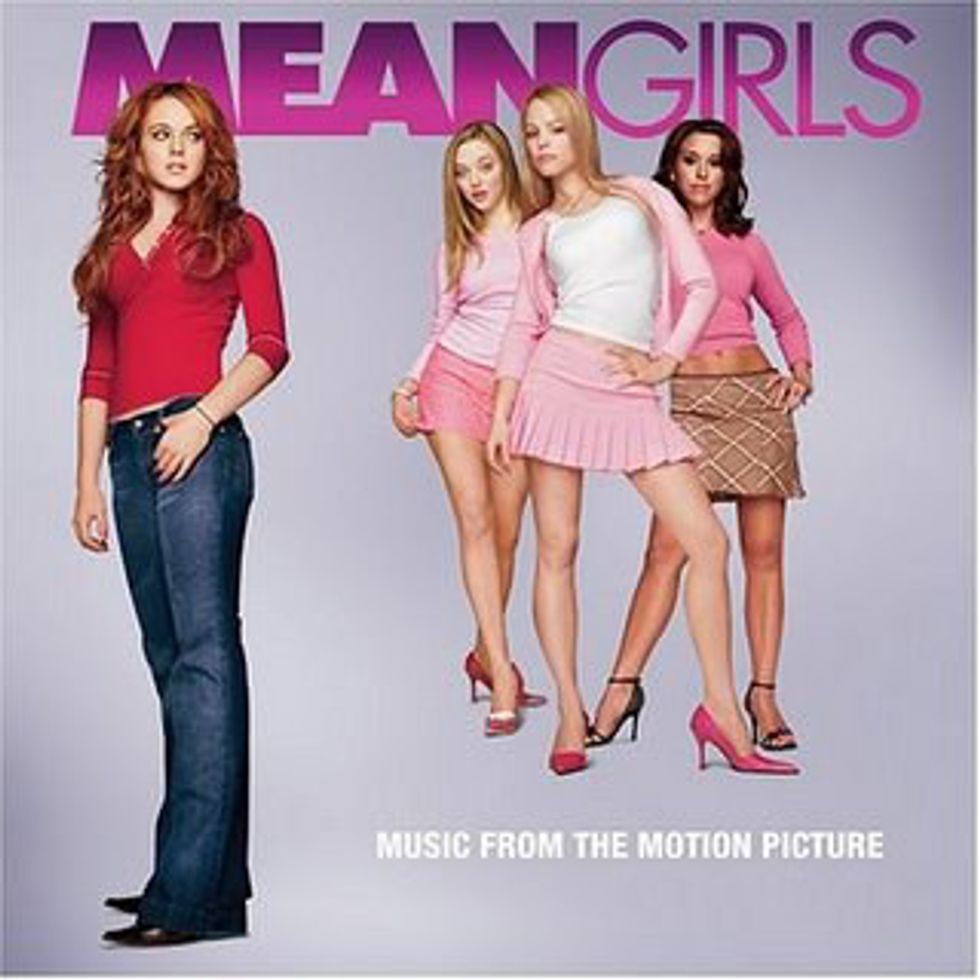Hope In Milwaukee Again
After a long wandering period of hopelessness, it is finally a great time to be a basketball fan in Milwaukee. The acquisition of all-star player Giannis Antetokounmpo, who is referred to as just Giannis or the “Greek Freak,” in 2013 gave Milwaukee Bucks fans hope yet again.
The year which he was drafted to the Bucks was most definitely a low point for the team, but since then, the Bucks have made an impressive comeback. Giannis, along with other key players on the team, have built up an impressive lineup which is well suited for the current biggest trend in the National Basketball Association (NBA): small ball.
Small Ball: The Trend
Small ball is an innovative style of play where a coach takes traditional centers, otherwise known as big men, out of their lineup and replaces them with players who have quickness and better technical skills such as handling the ball and shooting. These favored players are usually smaller—hence the term “small ball”—so essentially this lineup sacrifices size for skill, speed, and athleticism. Typically, a small ball lineup uses more guards outside the perimeter and less traditional big men inside the free throw lane.
Going small was once ridiculed, but when the Golden State Warriors won the championship in the 2015 NBA Finals, they proved just how well this style of play can work. The Warriors’ head coach Steve Kerr showed everyone how successful it can be.
Draymond Green, who barely reaches 6’ 7” (if he’s standing on his toes), was moved to the center position during the finals and it worked out excellently for them. Since then, small ball has been consistently growing in popularity and all teams in the league now have to learn either how to use the lineup or how to defend the lineup in order to be successful.
The Advantages of Playing Small
Going small speeds up the pace of the game, spaces out the court, and places a lot of emphasis on the three-point shot. The opposing team's defense is forced to expand itself out in order to protect the three-point line (or perimeter), which then leaves a lot of open space on the floor to create other possibilities offensively.
“It’s hard for five guys to maintain integrity when they are so far from each other,” wrote sportswriter Zach Lowe on Grantland. “The string eventually breaks, and when it does, Golden State can produce all kinds of looks—drive-and-kick three-pointers and jaunts to the rim ahead of scrambling defenders. The right combination of speed and shooting can beat size.”
Slow big men often lack the ability to effectively guard the perimeter, and smaller guys often have the necessary ball handling skills to dribble or pass right through a defense, or the ability to step back and shoot a three-pointer. Smaller players are playing taller positions now, and believe it or not, it’s working out for some teams.
Three-point shooters pull defenders away from the post which creates clear paths for layups, or it creates an open shot from behind the arc (the three-point line) which is often easier than attempting to create a shot from closer in. When a big man is forced to defend outside of his comfort zone, small ball works.
“Four guys out there around a rim-runner–that’s just hard to defend,” said Celtics coach Brad Stevens to ESPN.
The center, whose job is normally to protect the rim, has to make the decision to either stay there at the rim or come out to protect the three. Also, three points is obviously greater than two points, and it is easier to score many points in a short amount of time with this style of play.
Essentially, the small ball lineup works so well for the Warriors because it spaces out the other team defensively and increases the fast tempo offensively.
The Disadvantages of Playing Small
Small ball certainly has plenty of weaknesses, though, which is why many teams don’t find the same success with it that Golden State did. It is often considered an offense-for-defense tradeoff because going small sacrifices size, which means it also sacrifices defense and rebounding.
Taking the big man out of this situation usually means allowing the other teams more points, but the tradeoff proved to work out for Golden State. The Warriors compensate for the extra allowed points with their unique roster, because their defenders are smart and Andrew Bogut protected the rim well during the finals.
How Players Are Adapting: Big Becoming Small
Because of small ball’s rise in popularity, big players are now working on being able to go small. Size is less valuable nowadays than skill or shooting. It’s not that big men are changing—they’re just as big as they’ve been, if not a little taller.
In fact, the length of this ellipsis …. is the amount that the average NBA player’s height has changed in the past ten years. (The average height has gone up just .4 inches since 2006-2007, to be exact.)
The difference is that big men just aren’t being utilized in the same way that they used to be. Taller players are adapting by working on their ball-handling skills and ability to shoot from farther out to be more of a perimeter player if needed.
Big players that have the versatility to step out and make jump shots are a type of hybrid player that is arguably the most desirable type of player in basketball right now. Having a 7’0” player who can do what a 6’5” player can do is extremely valuable, because it allows a player to play small ball without sacrificing defense.
Why The Bucks Can Go Small: New Additions
These crucial hybrids are the reason the Milwaukee Bucks can find success with small ball in the same way that the Warriors did. Milwaukee’s roster has made some recent changes that make the team perfectly suited for this style of play, though this was not widely recognized right away.
“The way the roster is currently constructed suggests that the Bucks front office has, perhaps unknowingly, bought into the notion of small ball already,” wrote sportswriter Adam Coffman on Fansided.
Thon Maker, Matthew Dellavedova, Tony Snell, and Malcolm Brogdon are all important role players who have been acquired by the Bucks in the past year. Greg Monroe, Jabari Parker, and Giannis are all also important contributors who are relatively new to the team as well.
The recent changes made to the Bucks’ roster as of late shows that, whether this was intentional or unintentional, Milwaukee has the perfect opportunity to take what Golden State perfected and run with it.
Why The Bucks Can Go Small: Size and Length
The Bucks have the distinctive ability to play small ball without using small players, which is what makes this lineup work out so well for them. They are able to use a small ball lineup with four out of their five starters standing above 6’7”, and all of them having a wingspan greater than 6’10”, so they aren’t actually going small.
With Giannis and their centers, it is clear that this team is dominant in the NBA regarding length. Because of the team’s size, many naturally assume that Milwaukee is not equipped to play small ball, but that is simply not true. Milwaukee’s small ball is certainly unique, but that’s what makes it work for them.
This team can speed up the pace of the game by using the fundamental principles of small ball without sacrificing anything on defense, because their roster has the size it needs to be equipped to do that. Giannis, Maker, and Khris Middleton all have the potential to be elite-level defenders, and they can all effectively shoot as well.
Though Giannis doesn’t have the skill to shoot three-pointers just yet, deep shooters are able to open up a lane for Giannis to bound through the paint (the free throw lane) in two or three steps in his typical Greek Freak style.
Milwaukee does tend to struggle with rebounding, but this will happen regardless of however the lineup is set up. Not all hope is lost in the rebounding category, though.
Giannis is a solid team leader in rebounds, as the sixteenth best rebounder in the NBA. Monroe is also a consistently strong rebounder as the backup center, averaging 10.6 rebounds per every thirty-six minutes.
Head coach Jason Kidd can build around this by letting Giannis and Monroe (or another big man) shine as the primary and secondary rebounders when Milwaukee plays small.
Why The Bucks Can Go Small: Versatility
What truly makes this team successful in going small is versatility. Milwaukee’s starters and role players ability to adapt to new positions and become more well-rounded is essential in this league, which is why Kidd is able to utilize this in a small ball lineup.
Easily the most important component of this unique and versatile roster is Giannis, and for good reason. He isn’t called the Greek Freak for nothing, and that is because he is nearly seven feet tall but he has the speed, athleticism, and ball-handling ability of a player who is 6’4”.
This, along with the fact that he is an elite defender, is why he can be played at every position and cause a lot of mismatches for the other teams defensively. He is every small ball lineup’s dream.
Monroe is a player whose addition to the team made small ball a viable possibility, and this was partly made possible by his ability to adapt to a new position. Monroe started his career as a power forward, but has now been made into a dependable center.
Maker, a rookie big man, has been another key part of the Bucks’ success in going small. The 20-year-old australian is already over seven feet tall, and shoots three-pointers at 37.8 percent which is astonishing for someone of his age and height.
Currently, the team’s second best player is Middleton, who was out for the first three months on the season with a torn hamstring but is now back and leading the teams to important wins. His well-roundedness makes him able to fit in any lineup and make his teammates around him better.
When Giannis is out, Middleton runs the show. He posts impressive stats all-around, but his shooting percentage—41.7 percent from three—is extremely good, especially for a man his size.
Parker is the ultimate complement to Giannis. His polished offense pairs well with the unruly offense which Giannis is known for, and he shoots nearly 40 percent from deep which is impressive.
Defensively, he struggles, but Giannis, Middleton, Brogdon, and even Henson are all strong enough defensive players to easily pick up where he lacks defensively. Kidd has found that Parker actually can contribute on defense so long as he stays engaged by making it his task to guard the ball.
Parker tore his ACL on February 8 in a game against Miami Heat, so the team has had to manage without him, but he is confident that he will be back and better than ever next season.
"I don't want to be the same player," said Parker in a post-practice interview with Milwaukee Journal Sentinel. "I wouldn't be myself if I don't challenge myself to do better things, bigger things. I know I can be better."
With Parker and Middleton both being the same height and weight, it is easy for them to switch between small forward and power forward, adding to the team’s flexibility.
Middleton, Parker, and Giannis are all crucial to the team, because they are all very tall wing players who transition quickly in offense but are also very dependable on defense.
A wing player is typically a leading scorer and also an important line of defense, and these three players all do this well because they can defend other forwards and guards while also handling the ball and running an offense. They also cause mismatches in their positions because they are effective in guarding other players, but other players struggle to guard them.
Running an offense through Middleton and Giannis also opens up the opportunity for Rookie of the Year nominee Malcolm Brogdon to play as a point guard rather than a shooting guard. Brogdon is bigger than many point guards and effective in shooting field goals and three-pointers, but he isn’t the best ball handler.
That’s an okay problem with this lineup, though. Instead of Brogdon being the primary ball handler, the wings are then able to handle the ball and run the offense. Kidd no longer has the need for traditional point guards or power forwards on this team, and his roster is far from traditional.
The freedom that Kidd has in being able to switch around the majority of his players without losing any size regardless of position is rare and valuable. This unique and wing-heavy small ball lineup is precisely what makes the Bucks so tricky for teams that rely heavily on their power forwards and/or point guards to match up against.
Dellavedova, Snell, and Jason Terry are also all important role players in this lineup. Dellavedova is a versatile defender who is able to play multiple positions.
Terry, though he is nearing the end of his career at thirty-nine years old, is still valuable as a true shooter who can act as a playmaker and score off of the dribble.
Snell, though he may not rack up as many stats as his small forward counterparts Middleton and Parker, has played an important role to Milwaukee since his trade from the Bulls last year and has lessened the blow of Parker’s injury.
Though the Bucks don’t have the roster to completely take a big man out of their lineup like Golden State did, that’s no problem for them. Skilled size is needed at the big man position for the Bucks to truly pull off small ball, and they have that.
As of late, Maker has been playing more consistently and proving that he has the skill to take on that role, or Giannis and Parker can alternatively be utilized as a deadly big man combination.
Aside from Giannis, Monroe, and Henson, Milwaukee’s starters and role players are consistent at shooting three-pointers, regardless of position. All of Milwaukee’s starting lineup is primarily positionless, which is why they are becoming a real threat in the league.
“Positionless wing players have become the most important players in today’s NBA, and Milwaukee can play more of them together than any team in the league besides Golden State,” wrote sportswriter Jonathan Tjarks on The Ringer.
Why The Bucks Can Go Small: It Works
Adopting what Golden State perfected is working out pretty well for the Bucks. On Saturday, November 19, the Bucks used the Warriors’ lineup against them and nearly upset them, with the final score at 124-121.
During the NBA playoff series against the Raptors this April, the Bucks proved again how successful they can be going small. When Kidd had his team play small, it worked.
They were the underdogs going into the series, but they beat the Raptors in the first game of the series without the home-court advantage or Parker.
Though they didn’t win the series, Milwaukee proved this postseason how far they’ve come and how far they are going to go with this lineup.
Why The Bucks Can Go Small: They Are Only Getting Better
The Bucks could be a major threat for a long time. The team is full of young potential, and Kidd is planning on keeping this strong roster. Giannis, Middleton, Parker, Maker, and Brogdon, aren’t going anywhere anytime soon, and there are strong rumors about retaining Snell since his contract just ended.
Milwaukee is also in the middle of building a new stadium, which will bring the needed revenue to keep star players and give these players added reasons to stay in the city.
Not to mention, Kidd seems to be reliably good at building on young talent. He has done this with Giannis, Maker, and Parker, just to name three.
Thon Maker will continue to craft his raw talent, Giannis will learn to consistently shoot threes, and Parker will come back from his injury ready to make an impact.
This is the beginning of an exciting era for the Bucks, and everyone ought to buckle up and enjoy the ride.


 Photo by
Photo by  Photo by
Photo by  Photo by
Photo by 










 Photo by
Photo by 
 Photo by
Photo by 

 Photo by
Photo by  Photo by
Photo by  Photo by
Photo by 











